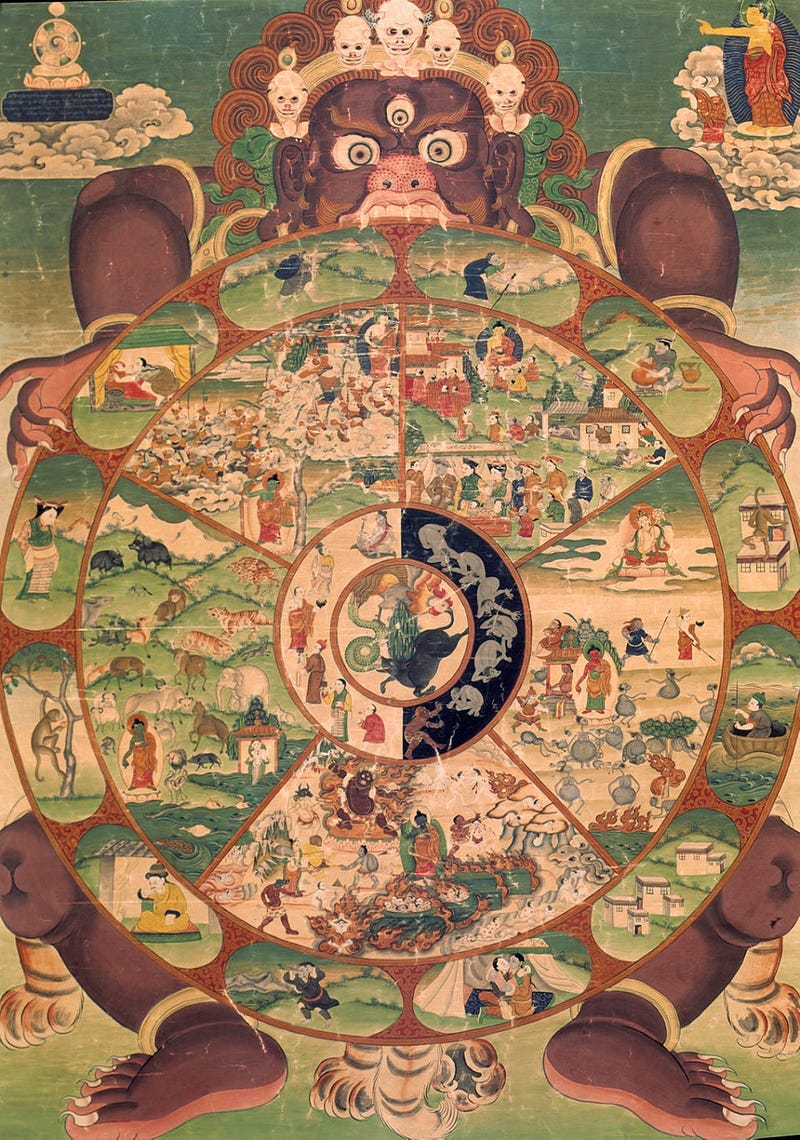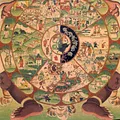What is meditation?
Many people think merely observing their mind is meditation.
It’s certainly a start, and you could call it meditation, but observing chaos does nothing to quiet the mind or reign in the turmoil.
Many people then engage in breath meditation, focusing attention on the breath and the sensations around the breathing process.
That is also useful, just as a track athlete would stretch and warm up.
Breath meditation is an excellent way to prepare your mind.
However, if that’s all you do, you don’t actually go anywhere. Like a sprinter who warms up but doesn’t enter the race.
My observation is that most meditation programs don’t go far beyond breath meditations.
Theravāda Buddhism has meditations such as Loving-Kindness, or Maitrī. The meditator is asked to think about certain things and feel the feelings that arise.
This is object meditation.

Vajrayāna Buddhism is prevalent in Tibet, and it’s the form of meditation I practice.
They take object meditation to the extreme.
They call it object meditation, but you don’t focus your attention on things. The “object” of meditation is a virtue or, more specifically, the feelings that arise when you think about virtue.
In the meditations, you start with contemplation, thinking about something, and when the virtuous feeling arises, you hold onto that feeling for as long as you can, hours if you have the concentration for it.
If you lose the feeling, you return to the contemplation, generate the feeling again, and then hold it.
You become well-practiced at generating and holding virtuous feelings in your heart.
What is Virtue?
Western philosophers elaborate on what constitutes virtue and how we should live.
The Vajrayāna Buddhists have a much simpler outlook.
A virtuous object is one that causes us to develop a peaceful mind when we concentrate on it.
If we concentrate on an object that disturbs our mind, like anger, jealousy, or attachment, then the object is non-virtuous.
The entire point of meditation in the Vajrayāna tradition is to attain peace of mind.
It works!
When my mind is peaceful, I feel happy.
It isn’t complicated.
It doesn’t need to be.
Because happiness is so elusive to most people (See The First Noble Truth), most people assume the answer must be complex, difficult to understand, and nearly impossible to implement.
Nothing could be further from the truth.
Aristotle understood this out 2,500 years ago, but he didn’t have the Buddha’s insights on how to achieve it. All these years later, and Western Philosophy still hasn’t figured it out.
Flooding my heart with Virtue
It isn’t something I can prove scientifically, but I’ve found that holding these feelings for extended periods reorients your thinking by changing your heart.
If you spend hours meditating on how much you love the world, the selfish Desire to lie, cheat, steal, and kill simply doesn’t arise.
The power of object meditation manifests in the way it shapes your heart.
Once my heart was trained to virtue, I didn’t think much about rules and procedures to guide my behavior.
I naturally walked the eightfold path.
- Right understanding (Samma ditthi)
- Right thought (Samma sankappa)
- Right speech (Samma vaca)
- Right action (Samma kammanta)
- Right livelihood (Samma ajiva)
- Right effort (Samma vayama)
- Right mindfulness (Samma sati)
- Right concentration (Samma samadhi)
This didn’t happen because I studied it and attempted to apply it like I was following a rule book.
It merely happened because my heart was so well-trained in virtue that I was motivated to do it naturally.
See: How to Understand Karma and Apply It to Your Life
In fact, I speculate that the eightfold path is not actually a set of instructions but rather a set of evaluative criteria that Buddhist masters can use to tell if a practitioner has indeed achieved higher-level realizations.
Without object meditation, none of this would be possible.
Where to find Virtuous Objects
The New Meditation Handbook from Tharpa Publications, production of the New Kadampa Tradition:
The New Meditation Handbook is a practical guide to meditation that teaches us how to make ourself and others happy by developing inner peace, and in this way making our lives more meaningful. Without inner peace there is no real happiness at all. Problems, suffering and unhappiness do not exist outside the mind; they are feelings and thus part of our mind. Therefore, it is only by controlling our mind that we can permanently stop our problems and make ourself and others truly happy. The twenty-one Buddhist meditation practices presented in this book are actual methods to control our mind and experience lasting inner peace. This extremely practical guide is an indispensable handbook for those seeking happiness and meaning in their lives.
This one book, more than any other, is responsible for changing my life.
I also suggest the three-volume set The Great Treatise on the Stages of the Path to Enlightenment, an extended study on Lamrim.

